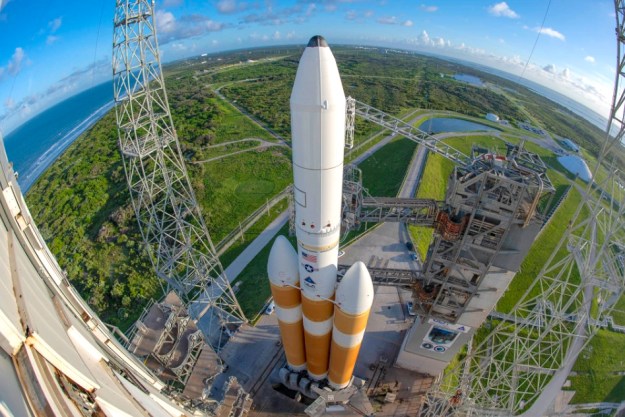A mission to send the first U.S. lander to the moon in five decades has launched successfully from the Kennedy Space Center in Florida.
Peregrine Mission 1, operated by Pittsburgh-based Astrobotic Technology, is also aiming to become the first to successfully achieve a soft touchdown of a privately built lunar lander.
If that wasn’t enough, the flight also involves the first-ever launch of United Launch Alliance’s (ULA) Vulcan Centaur rocket, which is replacing its Atlas V and Delta IV Heavy launchers.
The Peregrine mission departed Kennedy on time at 2:18 a.m. ET on Monday morning (11:18 p.m. PT Sunday night).
In a live stream of the event, Megan Cruz of NASA Communications described the launch as “a magnificent sight, really lighting up the night sky,” adding that it was “loud enough to set off a couple of car alarms nearby.”
Below, you can see a rerun of the broadcast, beginning with the Vulcan Centaur rising into the sky for the first time, with the Peregrine lunar lander safely concealed in the fairing at the top of the rocket.
The Peregrine Lunar Lander is about the size of a storage shed and is the first U.S. lander to be sent to the moon since the Apollo 17 mission in 1972. Peregrine is carrying with it various scientific payloads designed to take a slew of readings of the lunar environment during the lander’s 192 hours of operation after it reaches the moon on Friday, February 23. The mission will also test the functionality of advanced solar arrays.
Peregrine Mission 1 is part of NASA’s new CLIPS (Commercial Lunar Payload Services) program, which involves the space agency contracting private firms to send science missions to the moon ahead of the first Artemis crewed landing, which could take place next year.
Editors' Recommendations
- Final Delta IV Heavy launch scrubbed minutes before liftoff
- Check out these cool Earth images from the latest moon mission
- ULA aiming to debut new Vulcan rocket on Christmas Eve
- Boeing launches Starliner spacecraft on crucial test flight
- Watch this cool highlights video of ULA’s Atlas V launch

